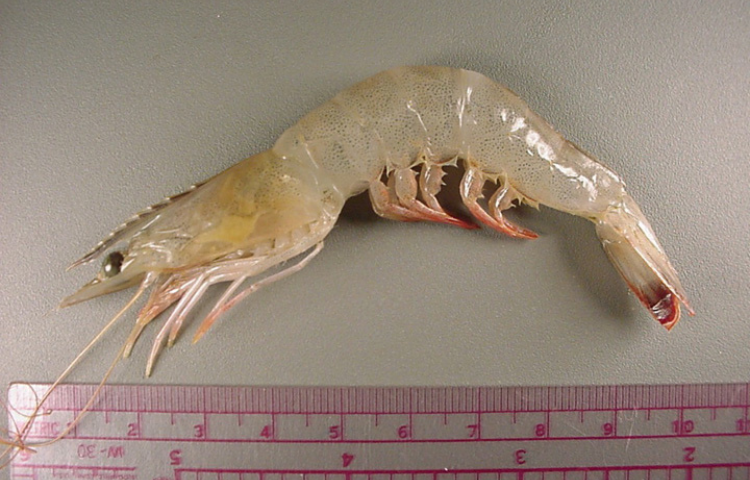2025 Gulf Ecosystem Initiative Postdoctoral Research Fellows

Along with our Gulf Ecosystem Initiative 2025 Working Groups, we are excited to welcome two new postdoctoral researcher fellows — Dr. Jonathan Rodemann and Dr. LM Bradley. Both bring unique expertise on critical issues facing the Gulf of America and will provide valuable insights for managing this interconnected ecosystem.

Dr. Jonathan Rodemann’s PhD research combines remote sensing of habitat composition with studies of animal movement and habitat use. With this experience his GEI project aims to deepen understanding of how fish respond to large-scale environmental disturbances, such as extreme weather in the Gulf.
More specifically, Rodemann seeks to better “understand how extreme climatic events impact the inshore recreational fisheries throughout the Gulf.” These fisheries take place in relatively shallow coastal waters from smaller boats, piers, or directly off the shore. They are vital to coastal communities, not only as a source of food but also as a cultural and recreational practice that supports local economies.
“This project is needed to better manage these fisheries in a changing world,” Rodemann explains. “The Gulf has experienced an unprecedented amount of Extreme Climatic Events, including major hurricanes and heat waves. However, we do not know how these events may impact recreational fisheries.”
Recreational fisheries in the Gulf generate billions of dollars annually, underscoring the importance of Rodemann’s work. By clarifying how extreme weather shapes fish populations and fishing activity, his research will help inform future management strategies that preserve recreational fisheries — and the meaningful connections they foster — for generations to come.

Dr. LM Bradley plans to apply their work in predictive modeling and aquatic systems to improve fisheries management in a changing world. Their GEI project will focus on one of the Gulf’s most vital fisheries—shrimp—bringing data-driven insights to support sustainability and resilience.
Shrimp has become the most popular seafood in the U.S., yet U.S. wild-caught shrimp face steep challenges. Demand has risen, but cheaper farmed imports have driven prices down, while production costs for U.S. fleets continue to climb. This economic squeeze has persisted for two decades, straining local communities, like those in the Gulf, that depend on shrimping for their livelihoods.
Additionally, environmental pressures add new complications. Bradley highlights, “The Gulf has a large ‘Dead Zone,’ where the water becomes hypoxic due to nutrient pollution from the Mississippi/Atchafalaya River Basin.” This oxygen-depleted area has a profound impact on penaeid shrimp—the kind most commonly found in grocery stores. As Bradley explains, these shrimp are highly sensitive to low-oxygen conditions, which leads them to be smaller, found in unexpected locations, and harvested at more variable peak times. This unpredictability, combined with the rise in imported shrimp, reduces the catch per unit effort (CPUE)—a measure of how efficiently shrimp can be caught relative to resources invested. Under such conditions, many boats struggle to justify going out to sea.
Bradley’s project aims to develop “a forecast model of shrimp landings for the Northern Gulf coasts (i.e., Texas, Louisiana, Florida) that predicts where, when, and how big shrimp should be.” This tool could help shrimp fisheries maximize CPUE while reducing bycatch (unintended species caught), strengthening both the local economy and sustainability.
Both Bradley and Rodemann are eager to engage with the NCEAS community. Rodemann emphasizes, “NCEAS fosters strong partnerships with stakeholders across the Gulf, and I look forward to working together to improve fisheries management.” While Bradley adds “I am very excited to be working with so many different experts who are all so dedicated to the craft of ecological synthesis” and that they will “make significant progress not only [in their own project, but within the working groups because of the incredible infrastructure at NCEAS.”
At NCEAS, nearly 200 postdoctoral fellows have advanced their careers within our unique infrastructure and community over the past three decades. Together, we’ve reshaped synthesis science through open, inclusive, and collaborative solutions to today’s environmental challenges.
The Gulf Ecosystem Initiative is a partnership between the National Center for Ecological Analysis and Synthesis and the NOAA RESTORE Science Program. The initiative supports the expansion of synthesis science and postdoctoral research in the Gulf of America. The collaborative work from GEI strengthens natural resource management in the region, with a focus on fisheries, climate change, and the ecological impacts of management decisions.
Interested in joining our next postdoc cohort? Applications open mid-November! Subscribe to our newsletter and follow us on social media to stay updated.

